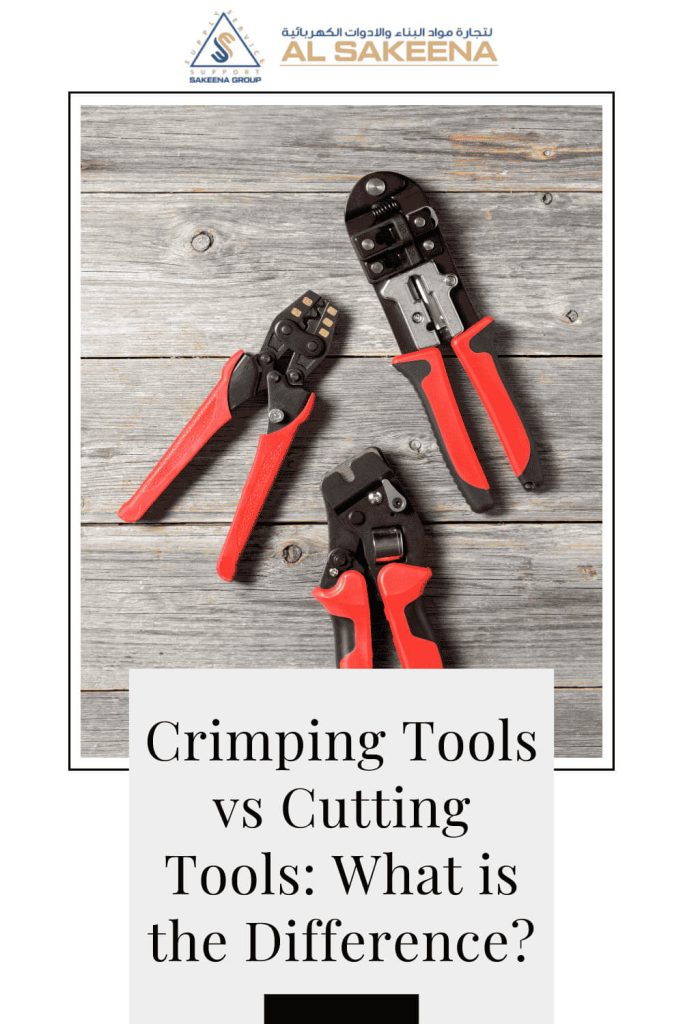Your One-Stop Shop for Engineering, Electromechanical & Construction Tools
Your One-Stop Shop for Engineering, Electromechanical & Construction Tools

In electrical, construction, and mechanical operations, the right tool matters for efficiency, safety, and precision. Two of the most universal tools are crimping tools and cutting tools. Though both are essential, understanding how they are different and where exactly to apply them ensures better results, fewer mistakes, and enhanced productivity.
This blog explains the types, uses, and best practices of crimping and cutting tools in industries to help professionals make the right decision.
Crimping tools are used to join two metal or other ductile material parts by deforming one or both of them to firmly grip the other. By crimping, a good joint is formed without soldering.
The use of good crimping tools ensures the stability of domestic and industrial electrical installations with less possibility of loose connections and hazards.
Crimping tools come in various forms depending on wire size and application. The two general categories are manual crimping tools and hydraulic crimping tools:
Manual crimping tools are portable and suitable for small wires and light-duty uses. They are inexpensive and small, ideal for general maintenance, minor electrical projects, and house wiring.
Hydraulic crimping tools make use of hydraulic pressure to create secure and dependable crimps in bigger connectors and cables. They are used quite extensively in industrial installations, high-voltage installations, and infrastructure development projects throughout, where reliability and efficiency are paramount.
Choosing the right type relies on wire gauge, use, and frequency. Hydraulic tools are appropriate for heavy-duty applications, and manual crimping tools will do for small, daily applications.
Cutting tools are utilized to remove material from a workpiece by definite shear action. In electrical work and building construction, they are required for cutting wires, slicing cables, and removing insulation.
Proper cutting tools ensure clean cuts, minimize wire damage, and enhance safety during installations and repairs.
| Feature | Crimping Tools | Cutting Tools |
|---|---|---|
| Primary Function | Join materials by deformation | Remove material through cutting |
| Common Uses | Attaching connectors to wires | Trimming wires, cutting cables |
| Precision | High precision for secure connections | High precision for clean cuts |
| Force Required | Varies (manual to hydraulic) | Typically manual |
| Maintenance | Inspect for wear, lubricate moving parts | Sharpen or replace blades |
| Durability | Long-lasting with proper care | Depends on blade sharpness and quality |
Crimping and cutting tools have wide-ranging uses across industries:
Considering these applications, technicians and engineers can ensure maximum efficiency and safety for electrical, mechanical, and industrial operations.
Proper maintenance extends the life and ensures maximum performance of your tools:
A crimping tool is used to join connectors to cables or wires by compressing them tightly. It ensures a secure, reliable electrical or mechanical connection.
A cutting tool is a device used to remove material from a workpiece by shearing or cutting. It shapes, drills, or machines materials in manufacturing processes.
Another name for a crimping tool is a crimper. It is used to join wires or connectors by compressing them together.
Cutting tools are used to shape, cut, or remove material from a workpiece. Fitting tools are used to assemble, adjust, or secure parts together.
Crimping tools and cutting tools play contrasting but complementary functions in industries. While crimping tools, manual crimping tools, and hydraulic crimping tools provide secure connections for wires and cables, cutting tools provide clean cuts and cable preparation. Crimping tools are used to securely attach connectors or terminals to the ends of wires and cables.
This creates a strong, reliable electrical connection. Cutting tools, on the other hand, are for cleanly shearing through wires, pipes, bolts and more. Having the proper cutters ensures a precise, safe cut every time.
Their distinction, uses, and maintenance requirements need to be understood for maximizing efficiency, safety, and long-term performance. Dependable suppliers Al Sakeena Building Materials & Electricals Trading allow businesses in Dubai to run smoothly and continuously with little downtime.